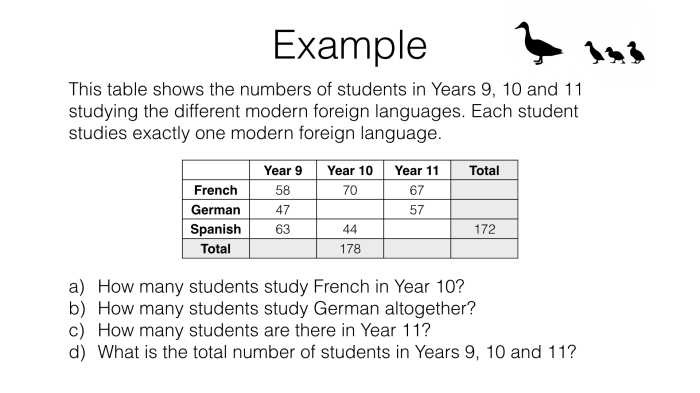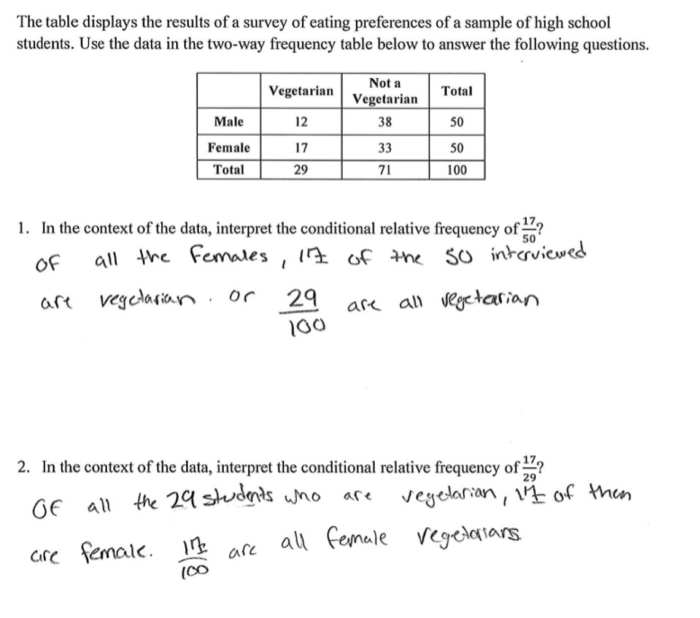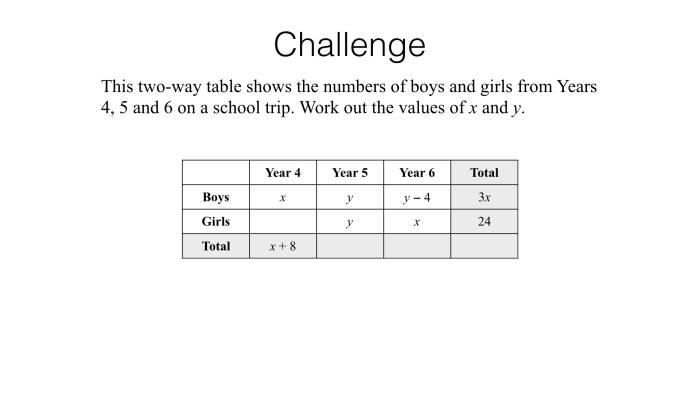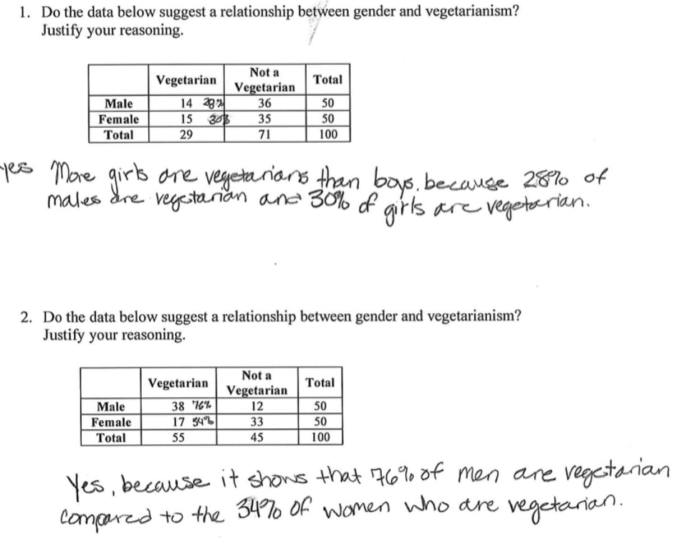Two way frequency tables worksheet with answers – Unveiling the intricacies of data analysis, this two-way frequency tables worksheet with answers empowers you to decipher patterns, uncover relationships, and make informed decisions. Dive into the realm of data interpretation and statistical significance as we explore the fundamentals, techniques, and applications of this invaluable tool.
Embark on a journey of discovery, where rows and columns align to reveal hidden insights. Understand the purpose, structure, and key components of two-way frequency tables, gaining a solid foundation for further exploration.
Two-Way Frequency Tables: Two Way Frequency Tables Worksheet With Answers

A two-way frequency table is a tabular representation of data that shows the frequency of occurrence of different combinations of two categorical variables. It is used to analyze the relationship between two variables and identify patterns and trends in the data.
Two-Way Frequency Table Basics
A two-way frequency table has two sets of categories, one for each variable. The rows of the table represent the categories of one variable, and the columns represent the categories of the other variable. The cells of the table contain the frequencies of occurrence of each combination of categories.
For example, a two-way frequency table could be used to show the relationship between gender and occupation. The rows of the table could represent the different genders (male and female), and the columns could represent the different occupations (doctor, lawyer, teacher, etc.).
The cells of the table would contain the number of people in each gender-occupation combination.
Creating Two-Way Frequency Tables, Two way frequency tables worksheet with answers
To create a two-way frequency table, you first need to determine the rows and columns of the table. The rows should represent the categories of one variable, and the columns should represent the categories of the other variable.
Once you have determined the rows and columns of the table, you can start filling in the cell values. The cell values represent the frequency of occurrence of each combination of categories. To calculate the cell values, you can count the number of times each combination of categories occurs in the data set.
Interpreting Two-Way Frequency Tables
Two-way frequency tables can be used to identify patterns and trends in the data. By looking at the cell values, you can see which combinations of categories are most common and which are least common.
You can also use two-way frequency tables to test for statistical significance. By using a chi-square test, you can determine whether the relationship between the two variables is statistically significant.
Detailed FAQs
What is the purpose of a two-way frequency table?
A two-way frequency table organizes data into rows and columns to display the frequency of occurrence for each combination of variables.
How do I determine the rows and columns of a two-way frequency table?
Rows and columns are determined based on the variables being analyzed. Each row represents one variable, and each column represents another.
What is a chi-square test used for in two-way frequency tables?
Chi-square tests assess whether there is a statistically significant relationship between the variables in a two-way frequency table.


